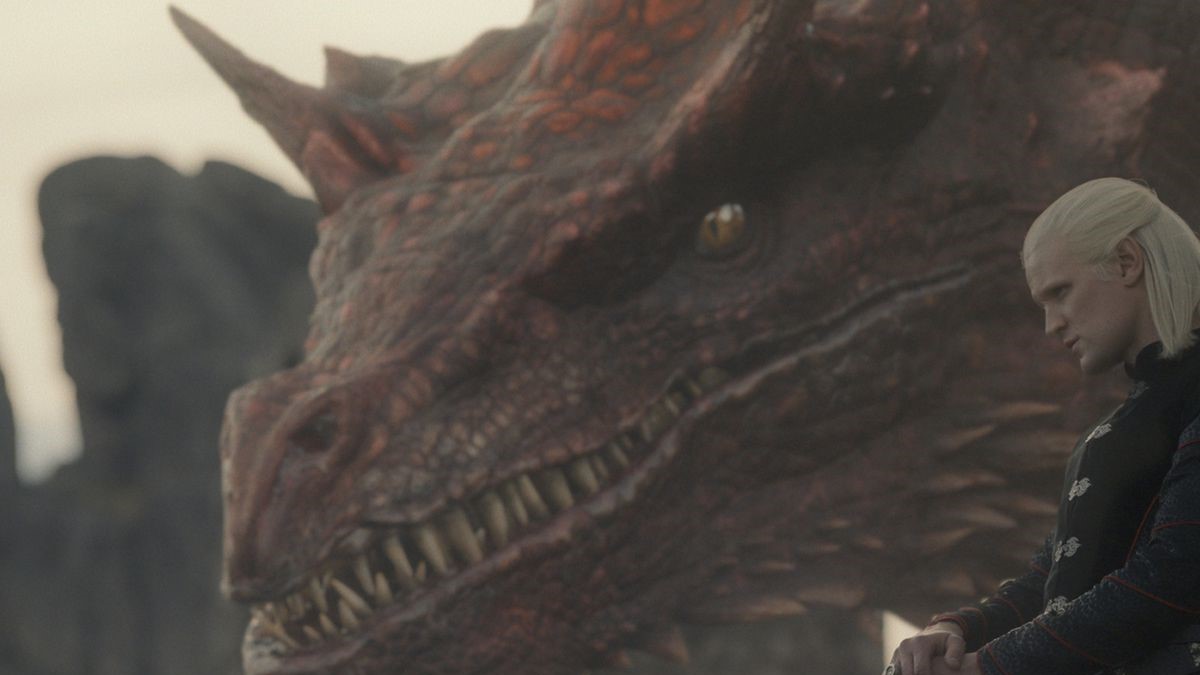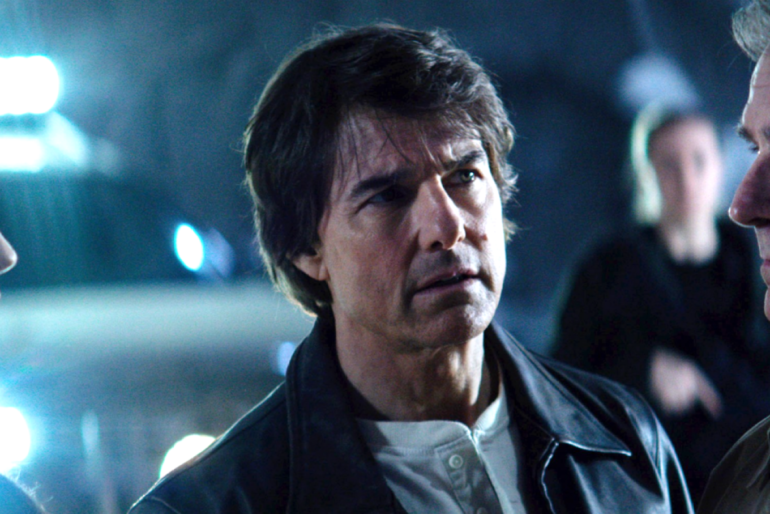So good... like you
Listeners:
Top listeners:
00:00
00:00
chevron_left
-
play_arrow
NGradio So good... like you
A spoiler-free deep dive into “The Black Queen,” featuring a rundown of riderless dragons, dragon accidents, songs, banners, the unwritten rules of kinslaying, and more
With Rhaenyra pursuing her claim to the throne and Aemond killing his nephew, the first dragons have danced and the civil war for the Iron Throne is officially on. Before winter comes and the long night between seasons begins, let’s break down “The Black Queen,” House of the Dragon’s Season 1 finale, and consider some implications for Season 2:
Deep Dive of the Week: The Crucial Riderless Dragons
At the black council, Daemon rattles off the count of dragons. The greens have four: Aegon’s Sunfyre, a relatively young dragon who hatched shortly after the newly crowned king’s birth; Helaena’s Dreamfyre, a roughly century-old dragon who was once the mount of Rhaena Targaryen and whom Helaena doesn’t fly often; Aemond’s Vhagar, the massive instrument of war who dates back to Aegon’s Conquest; and Daeron’s Tessarion, another young dragon (we haven’t yet met Daeron, the youngest son of Alicent and Viserys; showrunner Ryan Condal confirmed he exists in the show, though he was mum on whether he’ll appear in Season 2).
The blacks have quite a few more dragons. The most important are Daemon’s Caraxes, the experienced Blood Wyrm who has accompanied both Daemon and his uncle Aemon before him in various battles; Rhaenys’s Meleys, the swift Red Queen who was previously the mount of her aunt Alyssa; and Rhaenyra’s own Syrax, the youngest of the three, and a dragon who has never seen battle.
Next up are Rhaenyra’s sons. All three ride dragons who hatched when the Velaryon boys were infants. Jacaerys rides Vermax, Lucerys rides Arrax (but not for long), and Joffrey rides Tyraxes. Daemon’s daughter Baela also has a dragon, Moondancer, which is also young, as in Fire & Blood Baela hasn’t yet ridden her dragon when the Dance breaks out.
The blacks also hold Driftmark and Dragonstone—where many unclaimed dragons reside. Laenor’s dragon, Seasmoke, resides on Dragonstone (answering the question of whether Seasmoke traveled with Laenor to Essos, but leaving unresolved whether a dragon will accept a second rider while another is still alive). Then there are Vermithor and Silverwing, the former mounts of King Jaehaerys and Queen Alysanne. They reside near the Dragonmont, as do three wild dragons: Sheepstealer, Grey Ghost, and Cannibal.
“But who is to ride them?” Rhaenyra asks. Daemon ignores that question, shifting the conversation to his idea to take Harrenhal and establish a foothold in the crucial, centrally located Riverlands.
We shouldn’t move on so quickly, however. Dragons are the ultimate power in Westeros, and mounting these unclaimed dragons would give the blacks 13 dragons to the greens’ four. Even accounting for the fact that the blacks don’t have a dragon anywhere near as ferocious or intimidating as Vhagar (Daemon’s Caraxes being the closest), that’s a power imbalance that the greens would be unlikely to overcome. Getting these dragons battle-ready should be a high priority for the blacks.
And so it is that we see Daemon dipping out of a subsequent black council meeting to head deep into the Dragonmont and sing in High Valyrian to a dragon that Condal has confirmed is Vermithor. Let’s go over the backgrounds of these dragons, as they’ll certainly play a crucial role in the war to follow.
We’ll start with Vermithor. Remember Jaehaerys, the old king at the beginning of the series who preceded Viserys? Vermithor was his dragon, a “great bronze and tan beast” that had hatched from an egg placed in Jaehaerys’s cradle when he was an infant.
Jaehaerys had a long and storied reign as king, and Vermithor was with him throughout. When Jaehaerys’s reign was still in its regency, the king frequently rode Vermithor to and from Dragonstone, where he married his sister Alysanne in secret. When he came of age and took power in King’s Landing, Vermithor took him even farther. Jaehaerys made it a point to visit as much of his kingdom as he could, and unlike Aegon the Conqueror, who traveled in great processions, Jaehaerys took small hosts with him so that he could swiftly travel the continent and visit smaller castles. “I do not need to ring myself about with swords so long as I ride Vermithor,” the king says in Fire & Blood. In time, Jaehaerys visited virtually every region of Westeros, save Dorne, on Vermithor’s back.
By the time of House of the Dragon, Vermithor is roughly 100 years old, not ancient for a dragon—though he hasn’t been ridden in some 30 years. In that time, he’s made a home for himself on Dragonstone, like so many other riderless dragons. Vermithor is the second-largest dragon in the realm, behind only Vhagar, but unlike Vhagar he has almost no battle experience. Jaehaerys’s reign was so peaceful that Vermithor was used as a weapon of war just once, when Jaehaerys burned the Dornish fleet during the Fourth Dornish War. That conflict lasted only a single night before the Dornish surrendered.
Still, Vermithor is big, and size is a priority given how young and small the blacks’ other dragons are. And although Otto rattles off a list of the symbols of legitimacy belonging to Aegon II—his name, his crown, his sword, his throne, etc.—Vermithor offers the blacks plenty of legitimacy if they can claim him. Jaehaerys was the realm’s longest-ruling and most beloved king, and even 30 years after the Conciliator’s passing, there are surely many in King’s Landing who remember Vermithor.
Next up is Silverwing, another century-old dragon a bit like Vermithor. Queen Alysanne’s silver she-dragon hatched from an egg that was placed in Alysanne’s cradle, and soon became Alysanne’s mount. Like Vermithor, Silverwing spent much of her time shuttling her royal rider around Westeros. Alysanne even made it up to the Wall—though Silverwing refused to take Alysanne any farther north, a development that deeply troubled the queen.
Silverwing is about the same age as Vermithor, and is therefore presumably one of the largest dragons in the realm. But like Vermithor, she lacks experience—Silverwing wasn’t present for the Fourth Dornish War, and we have no record of her taking part in any kind of combat to this point. Fire & Blood goes on to describe the dragon as “docile.”
On to Seasmoke, who comes with questions. No known dragon has ever taken a second rider while another lives. But no known dragonrider has ever abandoned a dragon, either. We’re in uncharted territory when it comes to A Song of Ice and Fire lore here.
Seasmoke is a young dragon of about 30 years old, but at least has some experience in battle, as he helped Laenor, Daemon, and Corlys defeat the Triarchy way back in Episode 3.
While it’s unclear who could possibly ride these dragons—just as no known dragon has had two simultaneously living riders, no known rider has ever had two dragons (or even taken a second dragon after a first mount died)—at least these dragons are familiar with being ridden. The next three dragons Daemon mentions are wild—dragons who have never had a rider. Let’s look at what we know about them.
First up is Sheepstealer, who lives on Dragonstone and is named for self-evident reasons: He loves to steal sheep. Sheepstealer hatched when Jaehaerys was “still young,” making the mud-brown dragon up to 100 years old by the time of the Dance—though given how little we know about even bonded dragons, we should leave open the possibility that wild dragons grow at different rates than those that are bonded and live around humans.
Next is Grey Ghost, who is so named because of his shyness; he avoids being seen by humans for years at a time. As such, we know basically nothing about him, other than that he prefers a diet of fish caught from the Narrow Sea. I can at least report the color of this dragon: gray.
Finally, there is Cannibal, so named because he’s known to feast on dragon corpses and dragon eggs. Cannibal is an old, large, black dragon who lives on Dragonstone. Some smallfolk claim that Cannibal has been on Dragonstone since before the arrival of the Targaryens, but this seems unlikely, as the Targs first arrived on the island some 240 years before the start of the Dance of the Dragons. Balerion the Black Dread is the only dragon known to have died of old age, and he died at around the age of 208 (the exact year of his birth isn’t known with certainty, though the range of possibilities is relatively slim). It’s simply hard to believe that Cannibal is decades older than the oldest-known dragon, even if the idea of his being descended from a different group of dragons could explain why he’s so antagonistic to the Targaryen-descended dragons.
The last thing to know about Cannibal is that he is particularly mean, even for a dragon. Fire & Blood tells us that “would-be dragontamers had made attempts to ride him a dozen times; his lair was littered with their bones.”
That covers all the dragons referenced at the black council. (Daemon also mentions a clutch of eggs that he has, though even if those were to hatch immediately, they would not be ready for battle for years.) There are a few more dragons in the realm, however. Daemon fails to mention that his son Aegon the Younger has a dragon named Stormcloud who is also far too young to deploy in battle. Their other son, Viserys, is in possession of only an egg. Similarly, Aegon II and Helaena’s young children Jaehaerys and Jaehaera have dragons—Shrykos and Morghul—who also must be too young to ride. Their youngest child, Maelor, should also have an egg.
This brings us back around to the big question: How will the blacks find riders for these dragons? It’s thought that Targaryen blood—or at least Valyrian blood—is necessary to bond with dragons, as no one outside of House Targaryen has ever ridden a dragon in Westeros. To that end, Targaryens have lived in Westeros for more than 200 years, arriving at Dragonstone shortly before the Doom of Valyria. And as we see from so many of these noble houses, the Targaryens are no strangers to siring bastards (Aegon II already has some, as shown in Episode 9). These bastards are known as “dragonseeds,” and many smallfolk living on Dragonstone claim to have the blood of the dragon flowing through their veins. Whether these dragonseeds will be able to claim dragons, though, remains to be seen. And even if they are able to claim dragons, can the blacks trust them?
These are questions for Season 2. For now, the blacks have many more dragons than the greens, but the dragons they have largely lack battle experience, and many are either riderless or so small as to serve little use in battle (something Lucerys and Arrax found out this week).
Source: theringer.com
Written by: New Generation Radio
Similar posts
ΔΗΜΟΦΙΛΗ ΑΡΘΡΑ
COPYRIGHT 2020. NGRADIO





















Post comments (0)